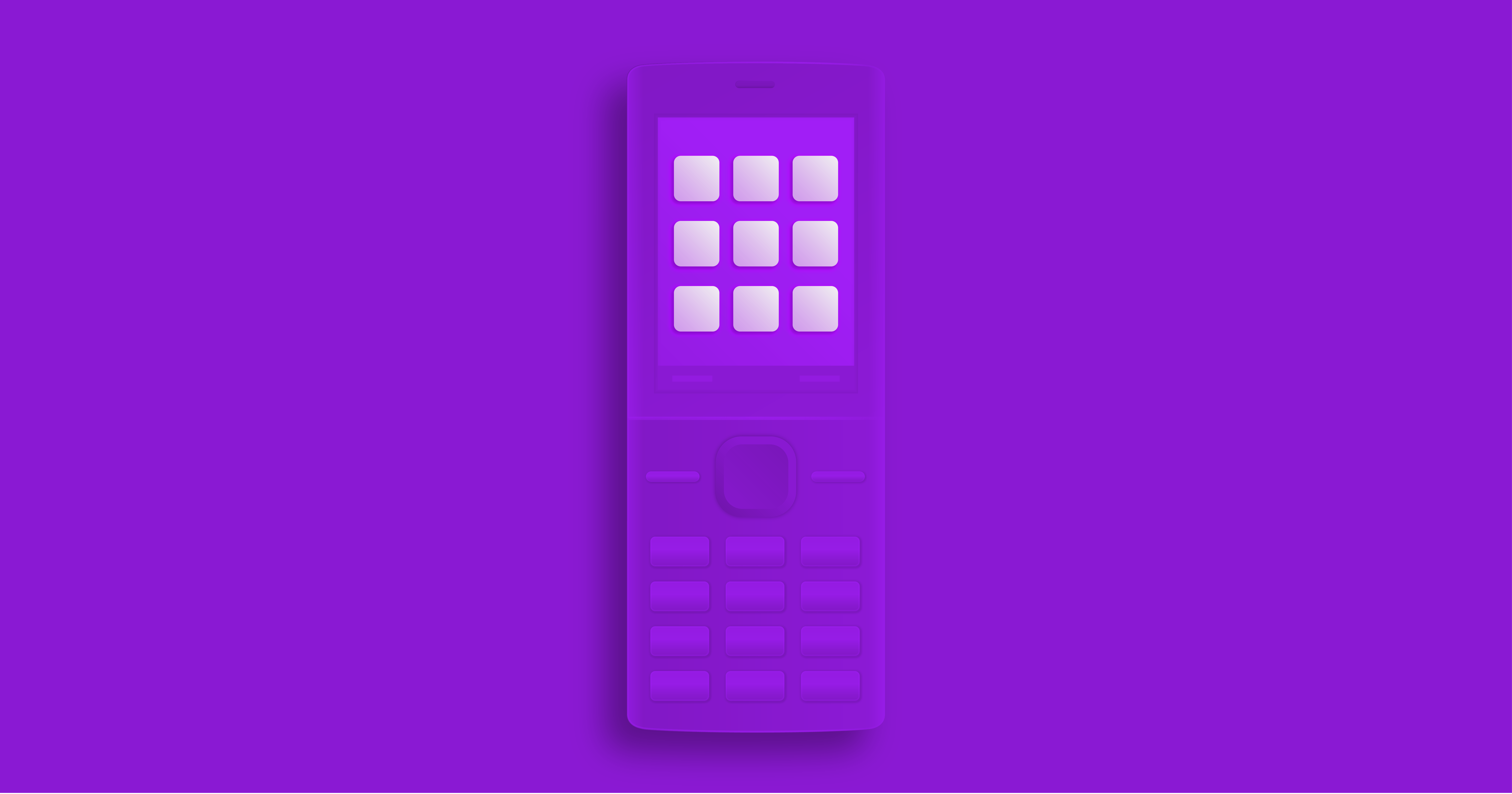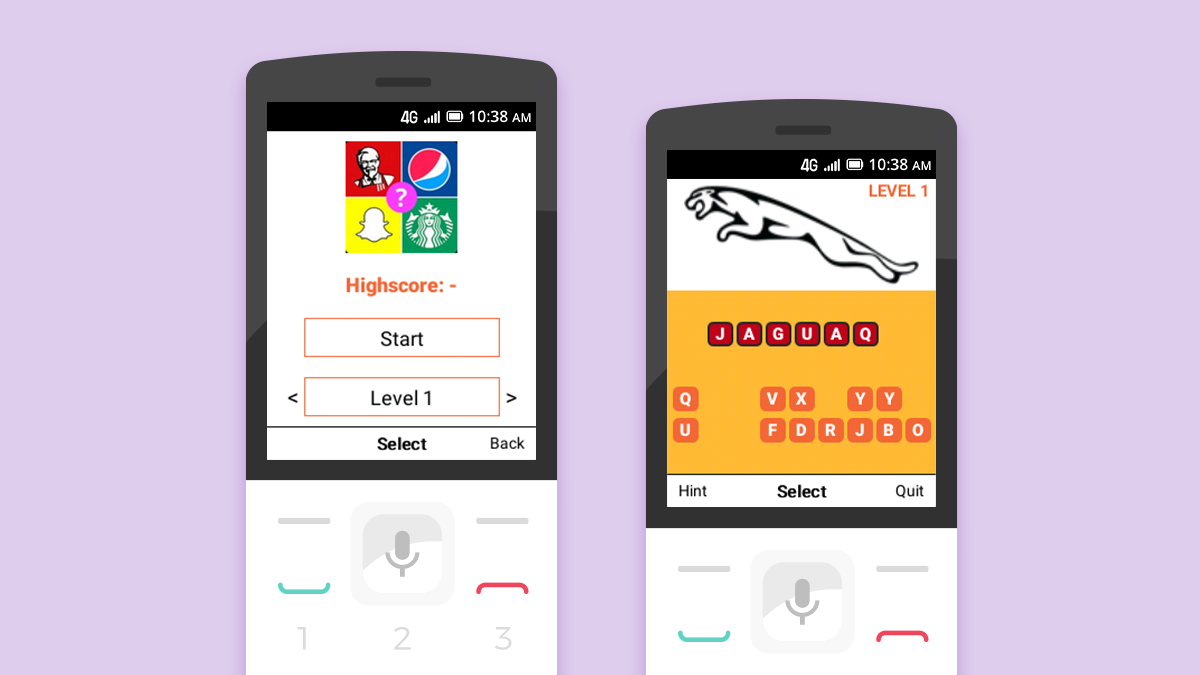
Have you heard of Hemingway’s famous six-word story? He was challenged to tell a complete story in as few words as possible. For sale: Baby shoes, never worn.
The power is in its simplicity. It’s an example of the psychology of creative limitation — purposely applying constraints to the creative process.
This method has been used successfully in everything from writing to design and can be useful in app development as well. Smart feature phone applications require a level of simplicity that native apps do not, challenging developers to use the power of app simplicity to their advantage.
We talked to a few app developers about their experience building web apps for KaiOS and discovered several ways that creating engaging and helpful apps with fewer resources helps them grow as developers.
App simplicity makes you think creatively
Staring at a blank monitor can be overwhelming because the options feel limitless. Many developers find that having constraints, such as having to design for smaller screens or for navigation via a physical keypad rather than a touchscreen, inspires them to get creative.
Developer Eli Shulga believes app simplicity helps keep him on course: “The simplicity in the process helps me psychologically. It’s easier to stay in the scope [of the app].”
While he always has the urge to do more, the limitations continually encourage him to scope down and narrow his focus.
Christian Waadt says, “The most difficult part was to figure out how to build a proper app for a phone without a touchscreen.”
While the limitation was challenging, Waadt wanted to see if he could build a 3D game for KaiOS devices.
Not only did Waadt succeed, he now documents his 3D game development progress on Twitter and shares advice on his website.
Ben Simms also enjoyed thinking beyond touchscreens. “It sort of forced me to think creatively about the games and how you can make them work with buttons and still make it enjoyable for people,” he said.
Another KaiOS developer came up with an interesting way to use the physical keypad. His retro platformer game is played by turning the device on its side and using the keypad like a console controller.
Bringing console-quality games to KaiOS! I’ve published retro platformer XRick to the store. from KaiOS
KaiOS developers don’t just find innovative ways to work with keypads and smaller screens – they also work out how to deliver engaging apps that require fewer resources from the device itself.
Smart feature phone applications teach you to optimize app performance
Apps in the KaiStore must be smaller than 6MB, so developers must find ways to deliver an engaging experience for users while working with limited performance capabilities.
Shulga, known for his hand-drawn animations, likens his approach to removing pages from a flipbook.
“I see if I can do the animation with fewer frames,” explains Shulga. “If it’s done quickly and with the right movement, I can save on performance by cutting animation in a fast movement and saving it for a different part of the app. It’s like a bonus performance!”
Day 98 of #100daysofGameDev Polishing up collect animation for Mr Toilet Paper for the next #SpriteKit small game for these weird times #IOS #indiedev #indiegame #games #IndieGameDev #gamedev #GameDeveloper #gamedevelopment #gamedesign #iOSDev pic.twitter.com/RcQPBlpXDc
— Shugo Studios (@ShugoStudios) May 1, 2020
“Developing apps for KaiOS is a new level,” says Christian Waadt. While the limited runtime performance was a major challenge, he claims developing for KaiOS encouraged him to improve his rusty JavaScript skills and come up with tricks to optimize the performance of his apps.
Web apps force you to think about how users interact with simpler hardware
Getting people to download an app and keep using it is hard – 60% of downloaded apps are opened less than 10 times before users give up on them. KaiOS developers say that building simple feature phone applications helps them prioritize the user experience.
Smartphones have so much screen real estate that apps can get very complex. Gabriel Rotaru says the smaller screens and physical keypads on KaiOS devices make him approach app development with a simpler outlook for the sake of the user.
“Every step is a key press,” he explains, “so you must construct the user interfaces differently to make sure the user has a good experience.”
For his game app, Guess the Logo, Rotaru used A/B testing to see how to encourage users to keep playing. He discovered that allowing players to skip levels made the game too easy, but without it, users became frustrated and quit playing.
In the end, Rotaru added a hint button and the option to skip a level after a certain number of incorrect answers. Focusing on the user experience helped him fine-tune his game and increase engagement.
Building feature phone applications made him realize that although he can make complex apps, that’s not necessarily what users want. It’s all about finding a balance.

When adapting an Android game for KaiOS, Ben Simms also started by thinking about how the user would hold the phone and interact with the game. In the end, he used the portrait orientation of KaiOS devices to his advantage and created a fishing game that leveraged the length of the screen to show fish deeper in the water.
Get creative with KaiOS
Working with hardware and software limitations can push you to come up with new ideas for engaging content. Smart feature phone applications can’t hide behind flashy features or elaborate design––their success relies on core functionality.
American jazz bassist Charles Mingus once said, “Making the simple complicated is commonplace; making the complicated simple, awesomely simple, that’s creativity.”
Challenging yourself to get creative by making simple yet impactful apps will help you grow as a developer. With KaiOS, you’ll have a place to show off your hard work.
Sign up for a Developer Portal account to get started. We can’t wait to see your app in the KaiStore!
Comments